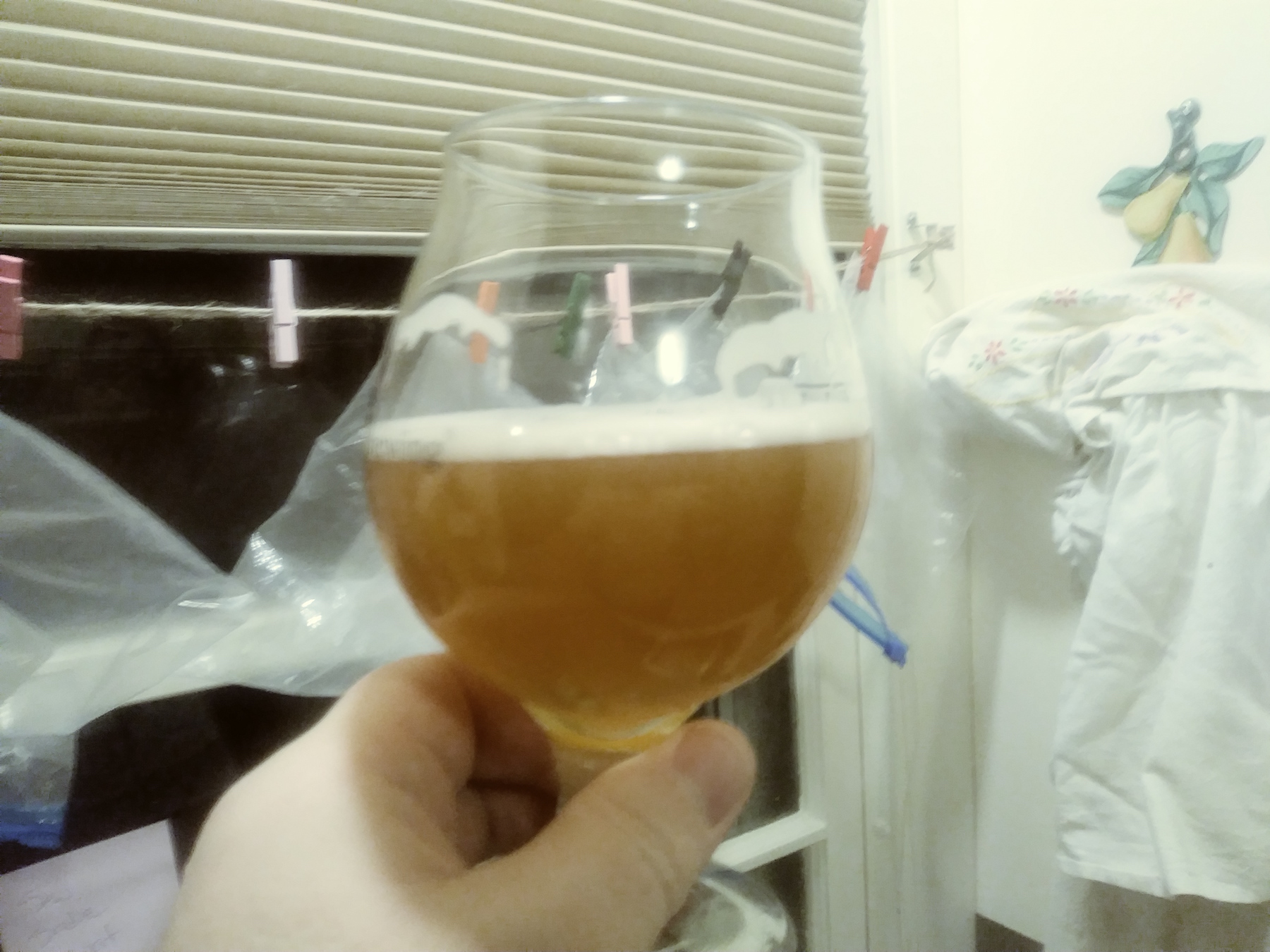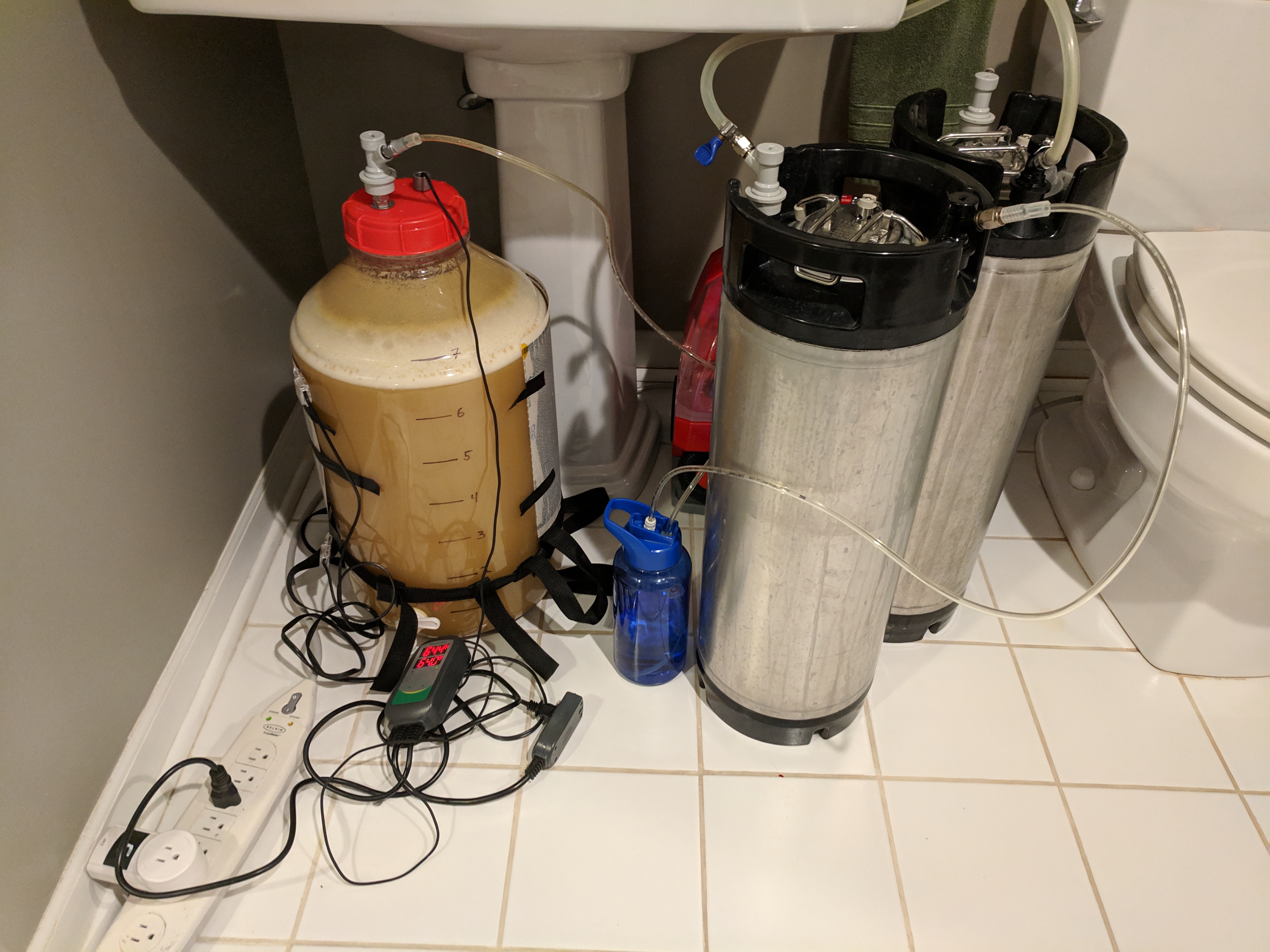SRJHops
Why did the rabbit like NEIPA's so much?
I'd also like to not only see a pic but also be able too try it.. I've never bottled any n.e and have it not degrade over that length of time... no disrespect here but have you ever had our tasted what an oxidized beer tastes like?? I mean maybe your bottling technique could be that good...but that's a tough one too get behind no matter how careful you are!
Well, my crappy phone camera makes it look darker than it is, but it's pretty close to the same color it has always been. Maybe a little oxidation, but trust me, I have made brown oxidized NEIPA's before -- back when I moved them to secondary and also used a bottling bucket.
This one still drinks fine, which I admit is surprising. But if you think about the process I am using, it gets minimal exposure to oxygen. The beer in most of the carboy has never been exposed - the only exposure is via the bottling wand and into the bottle. Sometimes I even add a little more beer to the neck of the bottle to minimize headspace.
There is one more thing that I do, which seems to go against a lot of thinking, but I dump everything into the carboy -- all of the trub. There was an exbeeriment that showed that trub can kick off fermentation faster and also result in a brighter and tastier beer. My beers are actively fermenting in about 8 hours, so there might be something to this?


Last edited:











![Craft A Brew - Safale BE-256 Yeast - Fermentis - Belgian Ale Dry Yeast - For Belgian & Strong Ales - Ingredients for Home Brewing - Beer Making Supplies - [3 Pack]](https://m.media-amazon.com/images/I/51bcKEwQmWL._SL500_.jpg)















































